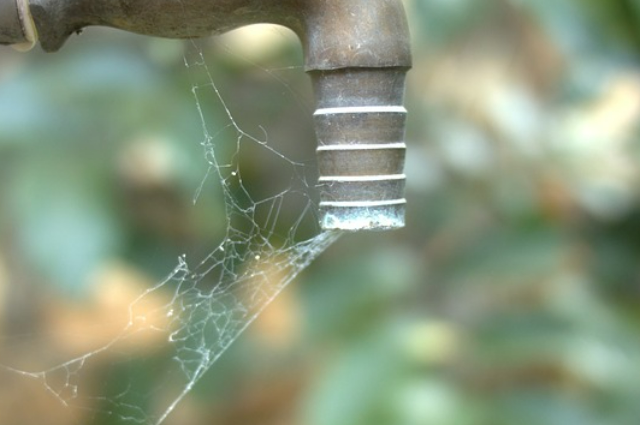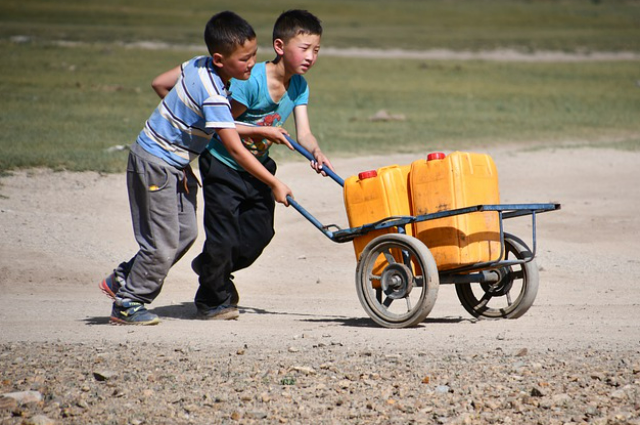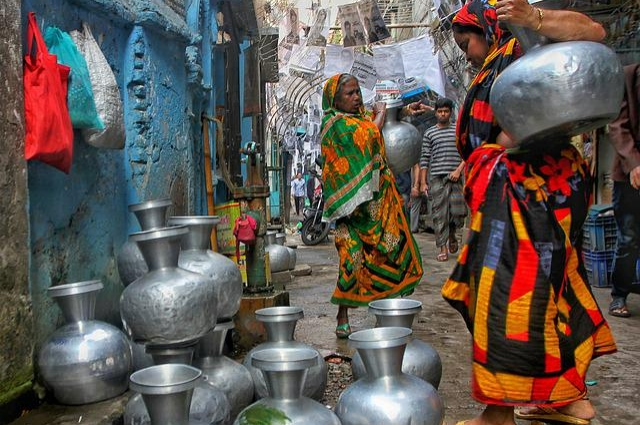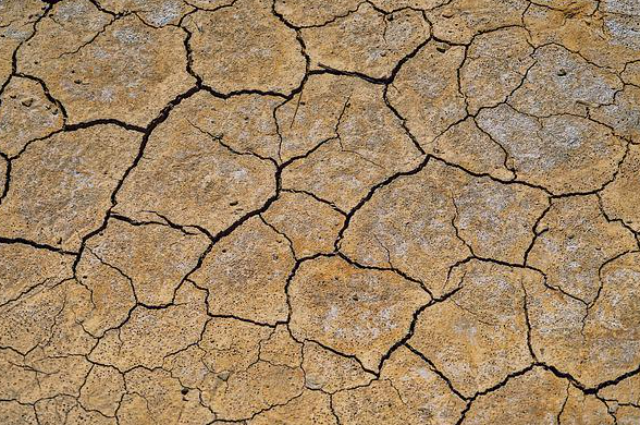
Introduction:
India constitutes more than 16% of the world’s population but the country woefully possesses only 4% of the world’s freshwater resources. Naturally, our country has become one of the most water-stressed countries in the world. The gloomy picture on the impending water crisis of our country projected by the National Institution for the Transformation of India (NITI) Aayog seems more dreadful than the apprehension of the environmentalists. The tiger is already prowling at the threshold. Though the candid exposure of the water crisis is applauded for transparency, the present pressing situation is created not by water resources but by poor water management. However, there is no time to waste for contention.
Gravity of the Situation:
According to NITI Aayog, about 200,000 people die every year due to inadequate access to safe water. The report reveals that about 600 million people in our country face high to extreme water stress. According to the Composite Water Management Index (CWMI) report released by the Niti Aayog in 2018, 21 major cities including Delhi, Bengaluru, Chennai and Hyderabad were expected to reach zero groundwater levels by 2020 affecting access for 100 million people. Chennai was practically the first Indian city to have gone dry. A 2019 NITI Aayog report reveals that India is passing through the worst water crisis in its history. The report adds that those 21 cities that had been apprehended to reach zero groundwater levels have probably exhausted their groundwater resources in 2021.
75% of households of the country do not have drinking water at home, whereas, 84% rural households do not have piped water access. What is more alarming is that with nearly 70% of water being contaminated, India is placed at 120th amongst 122 countries in the water quality index. On the other hand, frequent droughts are intensifying the complexity of the situations in a country like India where more than 50% of agriculture still depends on rainfall.
Bleak Prospects:
The NITI Aayog report admits that the water crisis is getting worse and is going to pose a more formidable shape as the demand in water of our country is projected to be twice the available supply. Needless to say, hundreds of millions of people in India are going to face a severe water crisis. It implies an eventual 6% loss in the country’s GDP. Naturally, the crisis will be severer by 2050. The water requirement is likely to be a milder 1180 BCM (billion cubic metres) whereas the present day availability is 695 BCM. Therefore, to meet the ever-growing demand for water implies the need for an improved understanding of our water resources and usage and ability to manage in an equitable and sustainable way. Food supply will be terribly hampered as cultivation of major crops like paddy and wheat will face extreme water scarcity before long. A disastrous water crisis has already been creeping up on us for years. In Uttar Pradesh and Madhya Pradesh the magnitude of water problem is acute. Besides, water tables in some parts of the country including Haryana, Punjab, and Andhra Pradesh have already plummeted critically.

Image by lanur from Pixabay
Ground Water Exploitation:
By sucking out nearly 260 cubic kms of water every year India is the biggest groundwater user in the world. 25% of all groundwater extracted globally is used in our country. Agriculture is the main consumer of water stock in our country. The Green Revolution changed the scenario by doubling the share of groundwater in agriculture from 35% during independence to more than 70% at present. What is concerning is that just in a decade from 2007 to 2017, the groundwater in India declined by over 60%. And almost 90% of it is used in agriculture. Now groundwater is the source of 90% of rural India’s drinking water needs, 75% of agrarian needs and 50% of urban India’s water needs. Water pollution is another concern for the source of water stress. According to the Central Pollution Control Board, urban people constituting 36% of the country’s population are woefully responsible for 70% of water pollution.

Image by Dibyendu Roy from Pixabay
Though water is a state subject, the Central Ground Water Authority has been constituted under Section 3 (3) of the Environment (Protection) Act, 1986 to regulate and control development and management of ground water resources in the country. Unfortunately, the regulatory agency under the central government is reportedly inactive to stall unsustainable use of groundwater accompanied by an upsetting recharge system. The NITI Aayog database says that 54% of wells in India are declining in level due to unsustainable withdrawal for irrigation.

Image by Maruf Rahman from Pixabay
Consumption and Contamination:
Experts mostly view that population explosion and mismanagement of water resources are the paramount reasons behind water scarcity in India. Inefficient use of water for agriculture under traditional irrigation techniques is one of the major reasons as 80% of the country’s water is used for agriculture. Punjab farmers use almost 4000 litres of water to produce one kilogram of paddy, whereas, according to some studies the same amount of paddy can be grown with just 300 litres of water. Besides, wastage of a large amount of water through drainage and sewage and leakages is another major concern.
Reduction of traditional water recharging areas due to excessive construction has upset the revival of traditional aquifers. Besides, a study conducted by the Centre for Climate Change put blame on constructions of highways, roads, flyovers, airports, skyscrapers depleting water resources in Chennai. Contamination of water due to excessive mingling of chemical wastes, muck and effluents into both running and stagnant water bodies is turning a vast amount of water unfit to use.

Frown of ‘Day Zero’:
‘Day Zero’ is a situation where taps start running dry. An analysis reveals that 10 metropolitan cities out of 200 cities in the world that are facing acute water crises are fast moving towards ‘Day Zero’. The list of ‘Day Zero’ includes Beijing in China, Mexico city in Mexico, Sanaa or Sana in Yemen, Nairobi in Kenya, Istanbul in Turkey, Sao Paulo in Brazil, Karachi in Pakistan, Buenos Aires in Argentina, Kabul in Afghanistan and what is more concerning is Bengaluru in India. According to an assessment conducted by Down to Earth, a magazine published by green think-tank Centre for Science and Environment (CSE), Bengaluru could go to Cape Town. In Bengaluru, the total number of extraction wells has soared from 5,000 to 0.45 million in the last three decades. The report that analysed the findings of several global studies on water use and availability of resources, noted that 36% of the cities across the world will face water crisis by 2050 and the urban demand is expected to go up by a whopping 80% from current level by 2050. Considering the current situation of water crisis, more Indian cities including Shimla, Udupi and Mangalore are also on the verge of ‘Day Zero’ situation. According to the Ministry of Jal Shakti, due to Global warming, over exploitation of ground water and human errors the states like Tamil Nadu, Punjab, Haryana, Madhya Pradesh, Andhra Pradesh, Uttar Pradesh, Rajasthan, and Telangana are under the severe threat of ‘Day Zero’ situation.
Government Initiatives:
However, much emphasis laid on the part of the Union Government to overcome the acute water crisis is a matter of solace. The Prime Minister Narendra Modi’s pet new project “Piped Water for All by 2024” is, of course, a drastic step to arrest the impending march of the water crisis. Nearly half a dozen departments that used to deal with surface and groundwater have been amalgamated to form the Jal Shakti Ministry, the first time in the country’s history, announced on May 31.
Gajendra Shekhawat, the first minister of Jal Shakti ministry, dispersing all doubts and apprehensions is optimistic about the successful implementation of the “Piped Water for All by 2014” project. Prime Minister has also directed village panchayats to construct check dams and embankments along rivers and streams and reservoirs to figure out the water crisis by enhancing water storage. Mr. Shekhawat with a view to make up the limited scope of Union Government’s intervention has decided to study macro and micro issues and adopt a holistic approach to push for ‘sustainable conscientious use of water’ to meet future challenges. Undoubtedly, no Central Government of the country has so far exhibited such a high degree of initiative to address the problem of water crisis. In the last two Union Budgets, emphasis has been laid on economic development that is inclusive and sustainable at the same time. In the 2021 – 2022 Union Budget, ₹ 2,87,000 crore has been allocated to the Ministry of Jal Shakti to launch the Jal Jeevan Mission (Urban) to ensure universal water supply to all 4,378 towns. Despite all these earnest efforts the government fails to manage the water crisis alone. The private sectors should also come forward in this regard to eradicate the water crisis.
But these are not enough. A massive mass awareness campaign should be orchestrated. Public awareness is urgently needed to stop wasting water in everyday life. According to experts urban access can be improved by reducing the approximately 40% of water lost due to leakages in urban areas through smart technologies such as sensors. Waste water treatment capacity in most states is not up to the expectation. More than half of their waste water is left untreated.
Namami Ganga:
The ministry also re-launched a programme that started in 2014 to clean up for the Ganga whose basin houses over 400 million people making it the world’s most populated river basin. A ₹ 20,000 crore programme named ‘Namami Ganga’ was prompted by the Central Pollution Control Board to make the river water fit for consumption and bathing after treatment with disinfectants.

Image by Nitin Kumar from Pixabay
Steps Need to be Taken:
Waterless urinals in our homes can save millions of gallons of water. The habit of excessive running of water during bathing, washing clothes and cleaning utensils should be reformed. Rain harvesting infrastructure and facilities should be made compulsory in flats, offices, and housing colonies. Traditional rain water harvesting areas like tanks, ponds, ditches must not be allowed to be encroached for construction and building purposes. De-silting operations in larger water bodies must be continued to enhance water storage capacity during monsoon.
Above all, the National River Linking Project (NRLP) should cautiously be under consideration to envisage the transfer of water from water ‘surplus’ basins devastated by floods to water ‘deficit’ basins hit by drought and acute scarcity of water, through inter-basin water transfer projects. In 2002, A P J Abdul Kalam, the former President of India, during a speech proposed it as a solution to India’s water crisis.
The subject must be given high priority to save the country from the bleak prospect. As the problem of water crisis possesses its worst look particularly during the summer months, it is ingrained in the deep psyche of the ordinary people that it is a seasonal problem. Only then the dailies and journals are beset with wads of news and articles. But as soon as the monsoon clouds appear, the problem of water crisis passes into oblivion. But we are not far away from the days when water crisis will be our constant worry.
Conclusion:
Jean Giono, a French author, in his work “The Man Who Planted Trees” written on the setting of Provence region of France in early 20th century sketched the horrendous pen picture of the desolation and abandonment of some villages because of complete exhaustion of water sources. Is a large part of our country going to be destined to face such an acerbic experience before long?
References:
- Composite Water Management Index, NITI Aayog, June 2018
- Composite Water Management Index, NITI Aayog, August 2019
- On Day Zero, India prepares for a water emergency by Surat Parvatam & Subhra Priyadarshini in nature india
- Water Crisis in India: The World’s Largest Groundwater User in teri on 24 March, 2022-04-23
- World Water Day 2022: How India is addressing its water needs: The World Bank
- World Water Day 2022: Groundwater crisis in India’s biggest states – How effectively are govts dealing with it: Financial Express
- GROUND WATER Making the invisible visible (The United Nations World Water Development Report 2022): UNESCO
- The Great Indian thirst: The story of India’s water crisis, solutions to tackle it: India Today
- World Water Day: Are we ready for the thirsty future? : Down To Earth.
